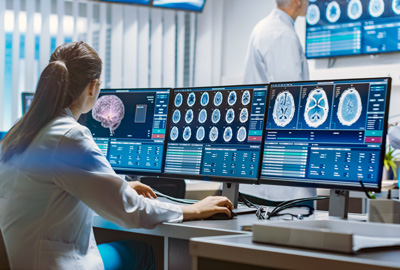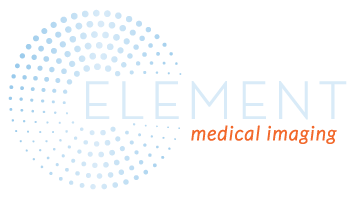Traumatic brain injury (TBI) is a significant public health concern worldwide, affecting millions of individuals each year. Whether resulting from sports-related accidents, vehicular collisions, falls or other incidents, TBIs can have profound and often life-altering consequences. Prompt and accurate diagnosis is crucial for ensuring appropriate treatment and minimizing long-term complications. In this blog post, we delve into the pivotal role of diagnostic imaging in diagnosing and treating traumatic brain injuries.
The Importance of Diagnostic Medical Imaging
 Diagnostic imaging techniques play a pivotal role in the evaluation and management of traumatic brain injuries. While clinical assessment and patient health history are essential components of diagnosis, imaging modalities provide invaluable insights into the extent and nature of brain injury. By visualizing internal structures of the brain, these techniques enable healthcare professionals to make informed decisions regarding patient care.
Diagnostic imaging techniques play a pivotal role in the evaluation and management of traumatic brain injuries. While clinical assessment and patient health history are essential components of diagnosis, imaging modalities provide invaluable insights into the extent and nature of brain injury. By visualizing internal structures of the brain, these techniques enable healthcare professionals to make informed decisions regarding patient care.
Types of Diagnostic Imaging for TBI
Several imaging modalities are commonly employed in the diagnosis of traumatic brain injury. These include:
- Computed Tomography (CT) Scan: CT scans are often the initial imaging modality of choice for patients with suspected TBI. CT scans provide detailed cross-sectional images of the brain, allowing healthcare providers to assess for intracranial hemorrhage, skull fractures and other acute injuries. The speed and accessibility of CT imaging make it particularly valuable in emergency settings for rapid triage and decision-making.
- Magnetic Resonance Imaging (MRI): MRI offers superior soft tissue contrast compared to CT scans, making it an invaluable tool for characterizing subtle brain injuries and detecting abnormalities not visible on CT. MRI is especially useful for assessing diffuse axonal injury, contusions, and other non-hemorrhagic lesions that may contribute to TBI symptoms. While MRI is more time-consuming and less readily available in acute settings than CT, it provides valuable information for long-term management and prognosis.
- Functional Imaging Techniques: Functional imaging techniques, such as functional MRI (fMRI), diffusion tensor imaging (DTI), and positron emission tomography (PET), offer insights into brain function and connectivity following TBI. These modalities can help identify areas of altered neural activity, assess white matter integrity, and evaluate metabolic changes associated with injury. While not routinely used in acute TBI diagnosis, functional imaging holds promise for understanding the underlying mechanisms of injury and monitoring recovery over time.
- Advanced Imaging Biomarkers: Emerging imaging biomarkers, including susceptibility-weighted imaging (SWI), perfusion imaging, and diffusion-weighted imaging (DWI), provide additional information about TBI pathophysiology and prognosis. These advanced techniques enable quantification of microstructural damage, assessment of cerebral blood flow, and detection of microhemorrhages, enhancing diagnostic accuracy and prognostic value.
Clinical Implications and Treatment Considerations
Accurate diagnosis facilitated by diagnostic imaging is essential for guiding appropriate treatment strategies and optimizing patient outcomes following traumatic brain injury. Depending on the severity and nature of the injury, treatment may involve a multidisciplinary approach, including neurosurgical intervention, pharmacological management, rehabilitative therapy, and supportive care. Diagnostic imaging findings help clinicians tailor treatment plans to individual patients, monitoring response to therapy and adjusting interventions as needed.
Conclusion
Medical diagnostic imaging plays a central role in the diagnosis and management of traumatic brain injuries, providing critical information about the extent and nature of brain damage. CT and MRI, along with advanced functional and molecular imaging techniques, offer valuable insights into TBI pathophysiology and guide treatment decisions. By leveraging the power of diagnostic imaging, healthcare professionals can improve patient outcomes and enhance the quality of care for individuals affected by traumatic brain injury.
Offering CT, MRI and PET Imaging technologies, Element Medical Imaging is your preferred partner in brain health. Schedule your exam today at Element Imaging. For additional brain injury information and support, visit https://biaks.org/.
